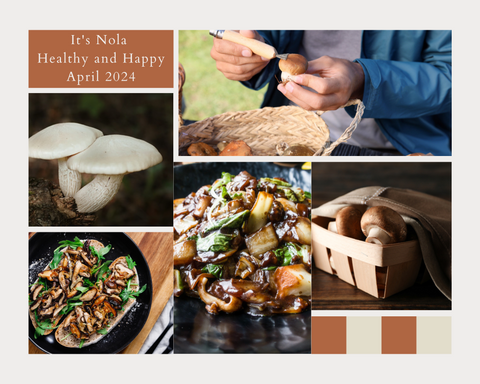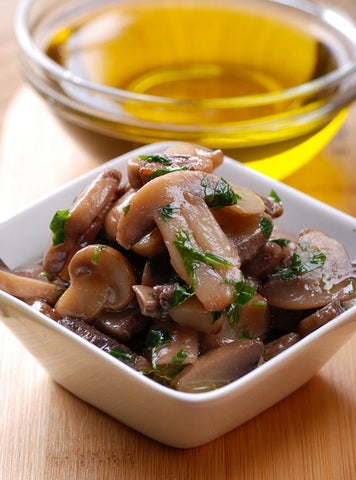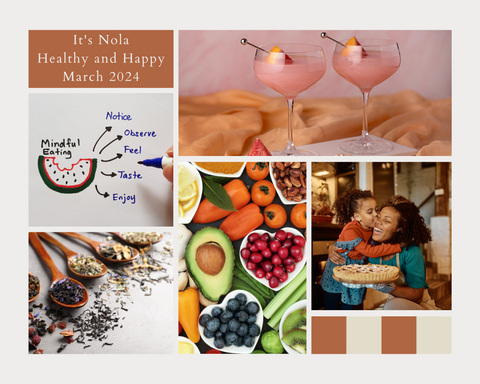Whether you are a plant-based eater or practice a Vegan or Vegetarian lifestyle, mushrooms are a great addition to weekly meals and snacks. According to Harvard Health, “All varieties of mushrooms are low in calories and fat, and contain modest amounts of fiber and various nutrients.”
Although mushrooms are often considered a vegetable, mushrooms are actually a fungus. They vary in appearance with more than 10,000 known types, but generally, they are distinguished by a stem, fleshy rounded cap, and gills underneath the cap, shares Harvard Health. China and the U.S. are among the top five producers of mushrooms worldwide.
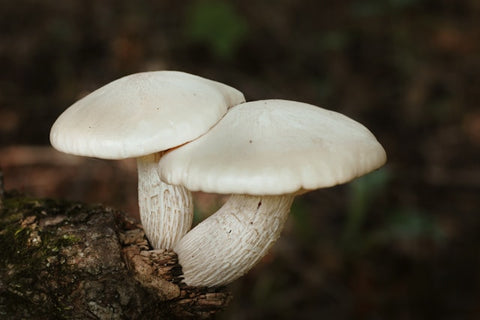
Mushroom Nutrition and Types
According to Harvard Health, mushrooms are a source of minerals and vitamins including B vitamins like B2, B3, B5, and folate as well as copper, phosphorus, potassium, selenium, and Vitamin D. Photo credit: Jen Theodore
The most common type of mushroom found in the U.S. is the button mushroom, which has a mild-tasting flavor and can be enjoyed cooked or raw. However, there are also a variety of mushrooms you may find at your community farmers market or local grocery store. Popular varieties of mushrooms include:
- Chanterelle
- Cremini or Baby Bella mushrooms
- Enoki
- Maitake
- Morel
- Oyster
- Porcini
- Portobello
- Shiitake
If you are interested in adding mushrooms to your weekly menu for meals with family and friends, here are some top tips when cooking with mushrooms.
Tips for Cooking with Mushrooms
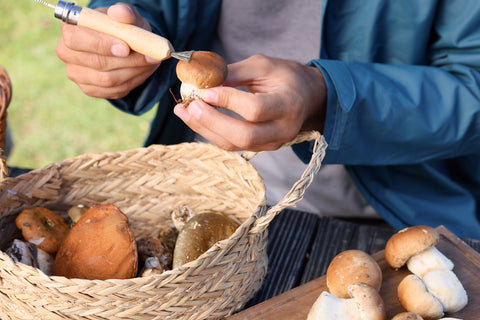
#1 Clean Carefully
Mushrooms are delicate and should be cleaned gently. Soaking them in water will cause them to become mushy. This is because mushrooms will absorb water if they are soaked and will not brown during cooking, which will also diminish their subtle flavor. Instead, brush dirt off with a damp paper towel or mushroom brush or place them under gentle running water to release any dirt or debris. Photo credit: Liudmila Chernetska
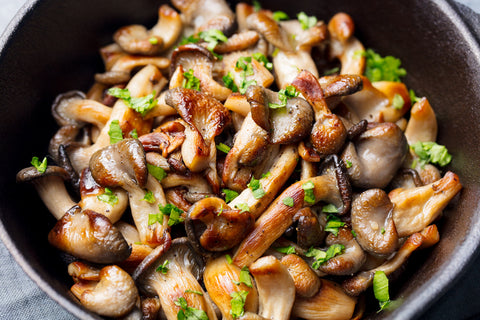
#2 Cook Correctly
Fortunately, all fresh mushrooms available for purchase at grocery stores or markets are safe to eat, whether cooked or raw. However, if you prefer to cook your mushrooms, avoid cooking them in high-temperature water such as boiling or microwaving. Harvard Health says these cooking methods may cause the water-soluble nutrients, like B vitamins and potassium, to escape in the cooking water. Instead, try sauteing quickly over high heat or simmering low and slow over low heat like in soups. These are ideal cooking methods for preserving nutrients. Photo credit: AnnaPustynnikova
#3 Incorporate Cooking Oil
Mushrooms have a distinctive flavor all on their own that can be brought out with simple additions such as avocado oil, butter, or olive oil. However, mushrooms do soak up fat readily so always use a high-quality cooking oil. Photo credit: Credit:al62
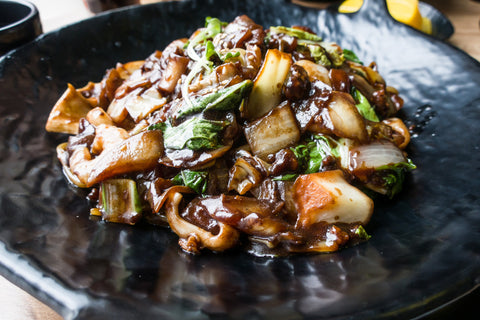
#4 Prepare for Portions
Mushrooms contain a lot of water, so they will shrink considerably during cooking. That means if you are cooking for a larger number of people, plan mushroom quantities accordingly so you have the proper number of portions.
Mushrooms can be prepared whole, but if you decide to slice them, do not slice them too thin. Thicker pieces (½ inch) can help offset any shrinkage and give body and texture to your meals. Photo credit: bong hyunjung
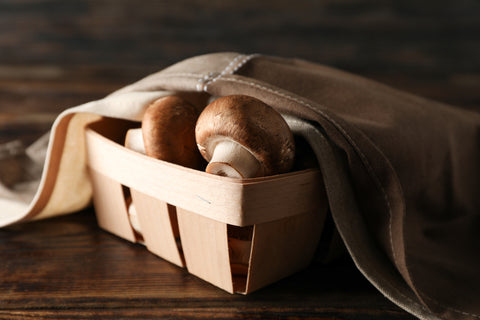
#5 Store Properly
When you run out of mushrooms and stock up on more, be sure to store them properly. Some of the best ways to store mushrooms include wrapping them in paper towels and storing them in an unsealed plastic or paper bag. These methods ensure any excess moisture will be absorbed while not drying out your favorite fungus.
Of course, you can always leave them in the original packaging, and keep them out of your produce drawer as it is best to store mushrooms in a less humid place in the fridge. Photo credit: AtlasStudio

How to Enjoy Mushrooms
Mushrooms can be enjoyed in a variety of ways. When added to existing recipes, mushrooms can lend a depth of complexity and flavor to almost any dish.
- Add chopped mushrooms to chilis, omelets, pasta sauces, salads, scrambled eggs, soups, or stir-fries.
- Bread mushrooms as you would chicken and fry them in hot oil. Again, be sure to use high-quality cooking oil.
- Make mushrooms into a filling or spread for paninis, sandwiches, tortillas, and other lunchtime staples.
- Marinate and grill large portobello mushroom caps and serve them up as a plant-based burger alternative. You can even replace traditional meat with chopped mushrooms as mushrooms make a great replacement for meat due to their earthy umami flavors and hearty texture.
- Roast mushrooms on their own or with vegetables. Roasting will bring out the subtle sweetness of mushrooms’ natural flavors.
- Saute mushrooms in olive oil and add them to cooked pasta, ravioli, or other whole grains.
- Stuff mushrooms with breadcrumbs, cheese, eggs, sauteed onions, and spices and serve them up as a mini easy appetizer.
- Use mushrooms as a topping on a handcrafted pizza or homemade flatbread.
No matter how you choose to enjoy mushrooms, they are a great addition to your weekly recipes. Want to know more about mushrooms? Check out Food Print.
- Stay Healthy and Happy
Need some more recipe ideas for mushrooms? Check out @Mbveganvegetarianshare or view our CEO at @itsnolasnacks as she shares recipes via video each month on It’s Nola Reels. Do not worry, even if you are not vegan, you will still enjoy these dishes.
Tag us @itsnolasnacks so we can see all of your mushroom-inspired recipes.

